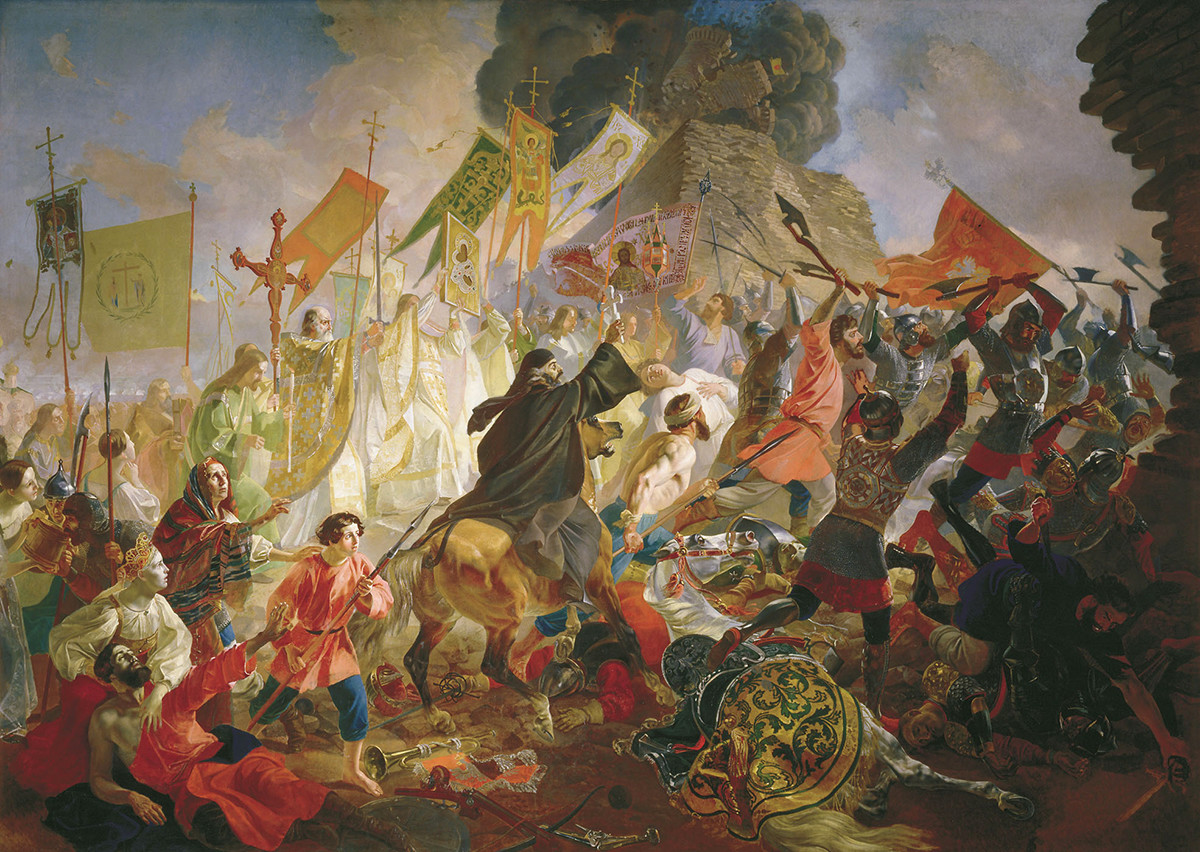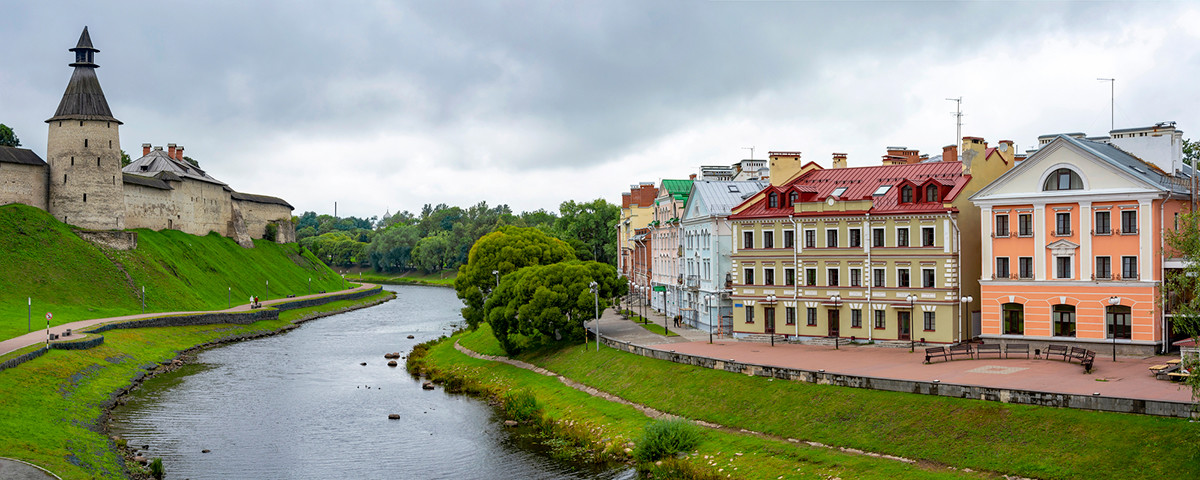Even older than Moscow
Pskov was first mentioned in the chronicles in 903, more than a century before Moscow was founded. And throughout its rich history it had many turbulent times.
Situated not far from the Estonian and Latvian borders, Pskov was a major trade center and an important point of defense for ancient Russia. Just like many other ancient cities, Pskov lost its powerful and strategic status in the early 18th century when St. Petersburg was founded.

Tretyakov Gallery
During World War II the city was for three years occupied by the Nazis who left most of the historical buildings in ruins and pillaged museum treasures.

Legion Media
Today, Pskov is a modern city where it’s nice to walk and dine. There are great embankments and restaurants in old boyar mansions - an unforgettable experience. And for sure you won’t regret sampling and experiencing the local culture.
Impressive kremlin, a witness of past glory
The first place to visit is the local kremlin, aka Pskov Krom. It could be the perfect place for shooting Game of Thrones, especially the Winterfell scenes. The city’s oldest part, the kremlin, is situated high on the picturesque spit of two rivers: Pskova and Velikaya.
Yevgeny Odinokov / Sputnik
The most impressive feature in addition to its location and surroundings is certainly the citadel’s walls, up to eight meters high and to six meters wide. Up on the walls are passages where one can walk (and take stunning pics with the river view), and a restaurant right inside the wall.
Legion Media
Among the must-see sights inside the kremlin are the medieval ruins. In the 14th century Pskov was one of several independent republics in the lands of ancient Russia, and there was a place for a popular assembly, known in Russian as veche.
Tretyakov Gallery
The white and most attractive building inside the citadel is the Trinity Cathedral, dating to the 17th century. It has one of the highest and largest iconostasis in the whole of Russia!
Legion Media
Ancient churches and sites saw turbulent times
Literally on every corner you’ll find ancient churches. In fact, there are so many that it’s impossible to visit all; you’ll even grow tired making pictures and trying to keep in mind which church has which name!
Ten of Pskov’s ancient cathedrals, monasteries and architectural sites are included in the UNESCO World Heritage List. The oldest among them is the ensemble of the Mirozhsky Monastery dating to the 12th century.
Yuri Artamonov / Sputnik
Other must-visit churches from the list are the Church of the Archangel Michael with a bell tower from the 14th century, and St. Basil the Great on the hill, dating to the 15th century.
Legion Media
Ludvig14 (CC BY-SA 3.0)
To the west of Pskov is the town and fortress of Izborsk. In the 13th century it withstood several attacks by the Livonian knights. But what is even more interesting is that the area is considered to be sacred. Not far from the fort’s walls, multiple springs flow from the hillside. Orthodox Christians believe the water is holy, and walk there to gather some.
Entasnu (CC BY-SA 4.0)
Another great site to visit is the huge and impressive monument to Alexander Nevsky and the Battle on the Ice, which took place in 1242 on Lake Peipus (known in Russian as Pskovo-Chudskoye Lake), and which is located on the Russia-Estonian border. Prince Alexander Nevsky defeated the Livonian Order, and many enemy knights fell through the ice and perished.
Public Domain, Legion Media
In the movie Alexander Nevsky the legendary Soviet director Sergei Eisenstein tried to recreate that battle,using stage sets instead of real ice, of course.
Pushkin Hills, a place where Russian literature was born
Almost 70 miles far from Pskov you will see true heaven on earth. Here, you will find three magnificent noble estates with parks and the Russian idyllic countryside.
Alexandra Guzeva
These places are connected with the life of the great poet Alexander Pushkin; Mikhaylovskoye was his family estate, while Petrovskoye and Trigorskoye were owned by his relatives and friends. In 1824, he was sent to exile here, and within two years wrote his best poems and works.
Alexandra Guzeva
Read more about Pushkin Hills here.
